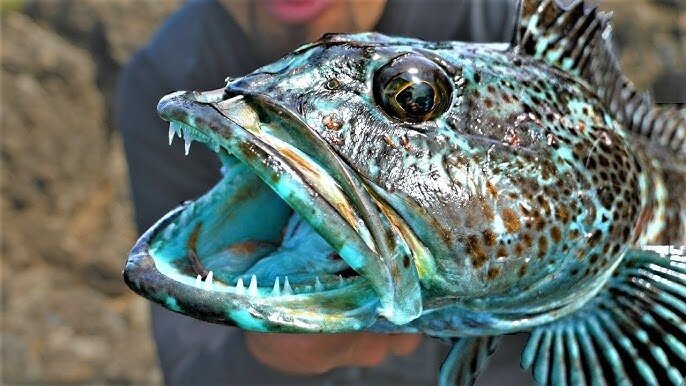The lingcod, Ophiodon elongatus, a fish known for its formidable appearance and prized meat, occupies a unique niche within the marine biodiversity of the Pacific coast. Among its ranks, the blue lingcod stands out, not just for its culinary value but also for the striking blue hue that adorns its flesh, a curiosity to scientists and a treasure to anglers. This essay aims to illuminate the mysteries of the blue lingcod, shedding light on its biology, ecological role, and human interactions.

Physical Characteristics
The blue lingcod distinguishes itself with a robust, elongated body capable of growing up to 60 inches in length and weighing over 80 pounds, though most specimens are considerably smaller. Its mottled skin, featuring shades of grey and green, conceals the startling blue or greenish flesh beneath, a phenomenon attributed to a bile pigment called biliverdin. However, not all lingcod possess this blue coloration; it is a peculiar trait found in only a fraction of the population. Researchers speculate that genetic variations or diet—particularly the consumption of certain crustaceans rich in blue pigments—may influence this characteristic.
Habitat and Distribution
Predominantly found along the Pacific coast from Alaska to Baja California, the blue lingcod prefers rocky bottoms and kelp forest habitats, where it can find shelter and ample hunting grounds. Juveniles often inhabit shallower waters, gradually moving to deeper, more structured environments as they mature. This preference for complex terrains, coupled with their solitary nature, makes the blue lingcod a challenging target for both predators and fishermen.
Diet and Predatory Behavior
As a voracious predator, the blue lingcod's diet encompasses a wide range of prey, including smaller fish, octopuses, and crustaceans. Its ambush predatory tactics, coupled with a broad mouth filled with sharp teeth, allow it to surprise and secure its meals with remarkable efficiency. This diet not only fuels the lingcod's considerable growth but also positions it as a key regulator within its marine ecosystem, maintaining the balance of species populations.
Recreational Fishing and Commercial Value
The blue lingcod is a coveted catch among recreational fishermen, revered for the fight it offers on the line and the quality of its meat on the plate. Techniques for catching blue lingcod include jigging and bait fishing, with anglers often seeking the rocky reefs and drop-offs the fish frequent. Beyond sportfishing, the blue lingcod holds significant commercial value. Its firm, flavorful flesh, particularly intriguing when blue, is a delicacy in seafood markets and restaurants, commanding high prices and contributing to the economic vitality of coastal communities.
Conservation and Sustainability
Despite its popularity, the blue lingcod faces challenges from overfishing and habitat degradation. Recognizing the need for sustainable management, regulatory bodies have implemented measures such as catch limits, size restrictions, and protected areas to ensure the lingcod's future. These efforts, combined with research into the species' life history and population dynamics, aim to balance human consumption with ecological preservation.
Conclusion
The blue lingcod embodies the marvels and complexities of marine life, offering insights into genetic diversity, ecological balance, and the interplay between nature and human activity. Its striking appearance, ecological significance, and value to humans highlight the importance of understanding and conserving marine species. Through continued research and sustainable management practices, we can ensure that the blue lingcod, along with the rich biodiversity it represents, thrives for generations to come, serving as a testament to the wonders of the aquatic world and our responsibility to protect it.

